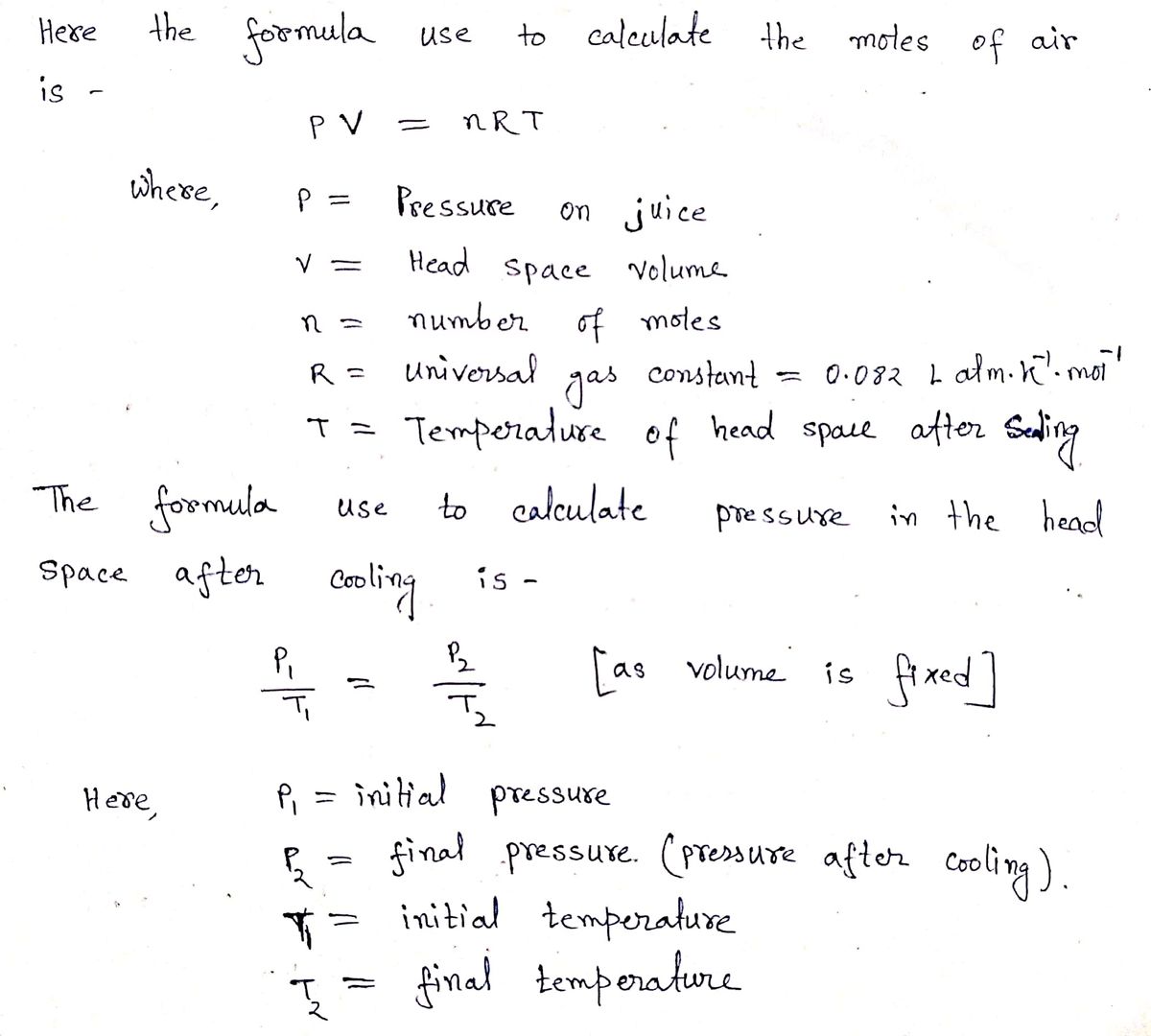The number 10 can is among the most commonly used can sizes for food storage. Thecan is filled with hot juice at 90◦C with an open lid. The pressure on juice initially is1atm. The head space volume (empty volume above the juice) is 240 ml. The lid is sealed immediately, and the container is cooled to 4◦C. Assume the liquid volume did not change during the cooling. a) Calculate the moles of the air in the head space after sealing at 90◦C. b) Calculate the pressure in the head space after cooling to 4◦C.
The number 10 can is among the most commonly used can sizes for food storage. Thecan is filled with hot juice at 90◦C with an open lid. The pressure on juice initially is1atm. The head space volume (empty volume above the juice) is 240 ml. The lid is sealed immediately, and the container is cooled to 4◦C. Assume the liquid volume did not change during the cooling. a) Calculate the moles of the air in the head space after sealing at 90◦C. b) Calculate the pressure in the head space after cooling to 4◦C.
Chemistry
10th Edition
ISBN:9781305957404
Author:Steven S. Zumdahl, Susan A. Zumdahl, Donald J. DeCoste
Publisher:Steven S. Zumdahl, Susan A. Zumdahl, Donald J. DeCoste
Chapter1: Chemical Foundations
Section: Chapter Questions
Problem 1RQ: Define and explain the differences between the following terms. a. law and theory b. theory and...
Related questions
Question
1.
The number 10 can is among the most commonly used can sizes for food storage. Thecan is filled with hot juice at 90◦C with an open lid. The pressure on juice initially is1atm. The head space volume (empty volume above the juice) is 240 ml. The lid is sealed immediately, and the container is cooled to 4◦C. Assume the liquid volume did not change during the cooling.
a) Calculate the moles of the air in the head space after sealing at 90◦C.
b) Calculate the pressure in the head space after cooling to 4◦C.
Expert Solution
Step 1

Trending now
This is a popular solution!
Step by step
Solved in 3 steps with 3 images

Knowledge Booster
Learn more about
Need a deep-dive on the concept behind this application? Look no further. Learn more about this topic, chemistry and related others by exploring similar questions and additional content below.Recommended textbooks for you

Chemistry
Chemistry
ISBN:
9781305957404
Author:
Steven S. Zumdahl, Susan A. Zumdahl, Donald J. DeCoste
Publisher:
Cengage Learning

Chemistry
Chemistry
ISBN:
9781259911156
Author:
Raymond Chang Dr., Jason Overby Professor
Publisher:
McGraw-Hill Education

Principles of Instrumental Analysis
Chemistry
ISBN:
9781305577213
Author:
Douglas A. Skoog, F. James Holler, Stanley R. Crouch
Publisher:
Cengage Learning

Chemistry
Chemistry
ISBN:
9781305957404
Author:
Steven S. Zumdahl, Susan A. Zumdahl, Donald J. DeCoste
Publisher:
Cengage Learning

Chemistry
Chemistry
ISBN:
9781259911156
Author:
Raymond Chang Dr., Jason Overby Professor
Publisher:
McGraw-Hill Education

Principles of Instrumental Analysis
Chemistry
ISBN:
9781305577213
Author:
Douglas A. Skoog, F. James Holler, Stanley R. Crouch
Publisher:
Cengage Learning

Organic Chemistry
Chemistry
ISBN:
9780078021558
Author:
Janice Gorzynski Smith Dr.
Publisher:
McGraw-Hill Education

Chemistry: Principles and Reactions
Chemistry
ISBN:
9781305079373
Author:
William L. Masterton, Cecile N. Hurley
Publisher:
Cengage Learning

Elementary Principles of Chemical Processes, Bind…
Chemistry
ISBN:
9781118431221
Author:
Richard M. Felder, Ronald W. Rousseau, Lisa G. Bullard
Publisher:
WILEY